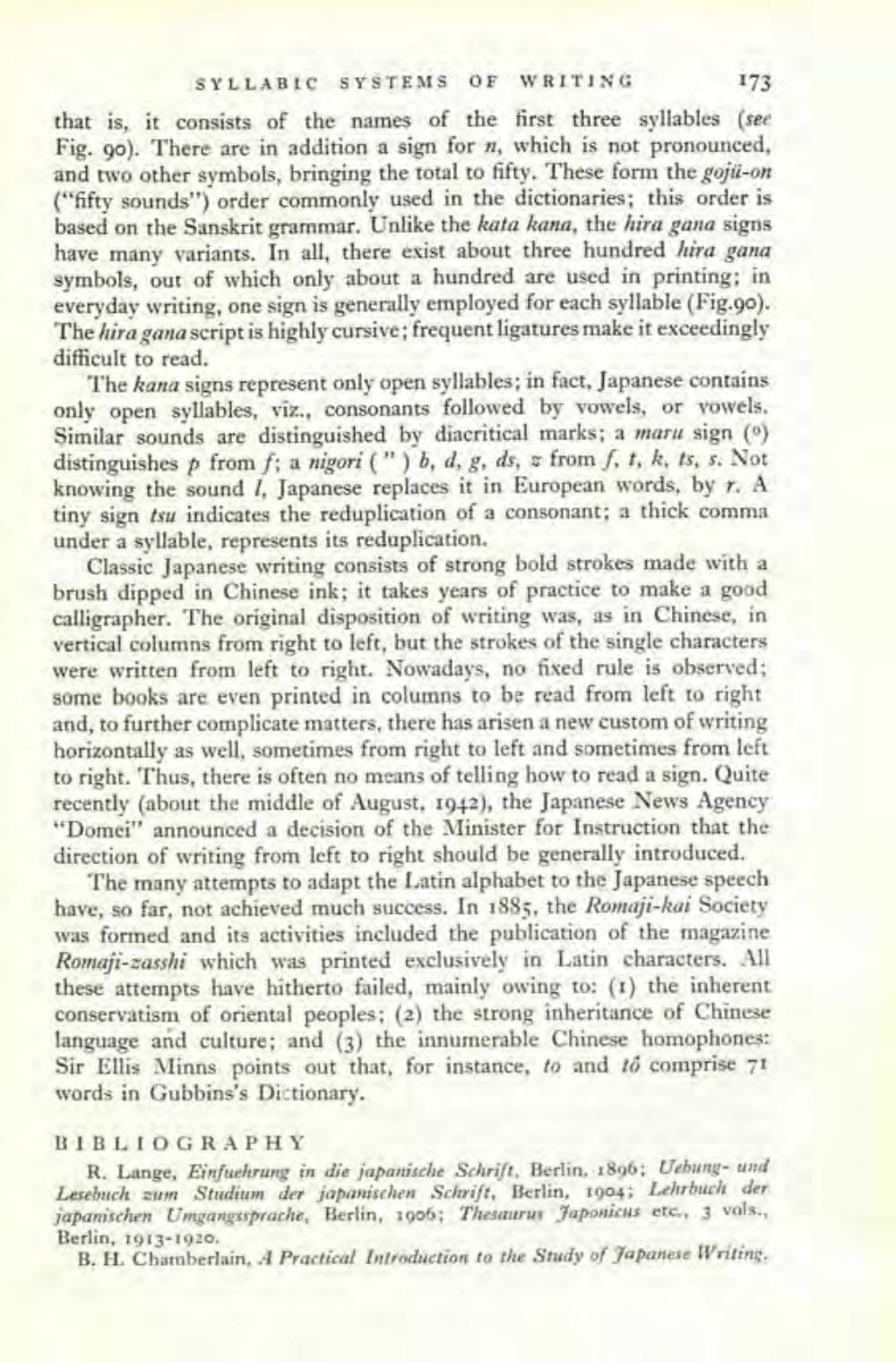________________
SYLLABIC SYSTEMS OF WRITING
173
that is, it consists of the names of the first three syllables (see Fig. 90). There are in addition a sign for n, which is not pronounced, and two other symbols, bringing the total to fifty. These form the goju-on ("fifty sounds") order commonly used in the dictionaries; this order is based on the Sanskrit grammar. Unlike the kata kana, the hira gana signs have many variants. In all, there exist about three hundred hira gana symbols, out of which only about a hundred are used in printing; in everyday writing, one sign is generally employed for each syllable (Fig.90). The hira gana script is highly cursive; frequent ligatures make it exceedingly difficult to read.
The kana signs represent only open syllables; in fact, Japanese contains only open syllables, viz., consonants followed by vowels, or vowels. Similar sounds are distinguished by diacritical marks; a maru sign (0) distinguishes p from f; a nigori (") b, d, g, ds, from f, t, k, ts, s. Not knowing the sound I, Japanese replaces it in European words, by r. A tiny sign tsu indicates the reduplication of a consonant; a thick comma under a syllable, represents its reduplication.
Classic Japanese writing consists of strong bold strokes made with a brush dipped in Chinese ink; it takes years of practice to make a good calligrapher. The original disposition of writing was, as in Chinese, in vertical columns from right to left, but the strokes of the single characters were written from left to right. Nowadays, no fixed rule is observed; some books are even printed in columns to be read from left to right and, to further complicate matters, there has arisen a new custom of writing horizontally as well, sometimes from right to left and sometimes from left to right. Thus, there is often no means of telling how to read a sign. Quite recently (about the middle of August, 1942), the Japanese News Agency "Domei" announced a decision of the Minister for Instruction that the direction of writing from left to right should be generally introduced.
The many attempts to adapt the Latin alphabet to the Japanese speech have, so far, not achieved much success. In 1885, the Romaji-kai Society was formed and its activities included the publication of the magazine Romaji-zasshi which was printed exclusively in Latin characters. All these attempts have hitherto failed, mainly owing to: (1) the inherent conservatism of oriental peoples; (2) the strong inheritance of Chinese language and culture; and (3) the innumerable Chinese homophones: Sir Ellis Minns points out that, for instance, to and to comprise 71 words in Gubbins's Dictionary.
BIBLIOGRAPHY
R. Lange, Einfuehrung in die japanische Schrift, Berlin, 1896; Uebung- und Lesebuch zum Studium der japanischen Schrift, Berlin, 1904; Lehrbuch der japanischen Umgangssprache, Berlin, 1906; Thesaurus Japonicus etc., 3 vols., Berlin, 1913-1920.
B. H. Chamberlain, A Practical Introduction to the Study of Japanese Writing.




